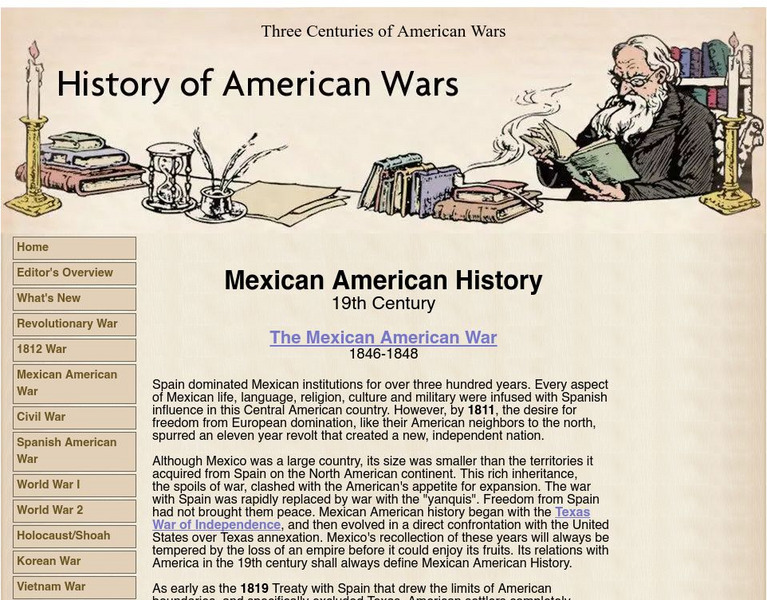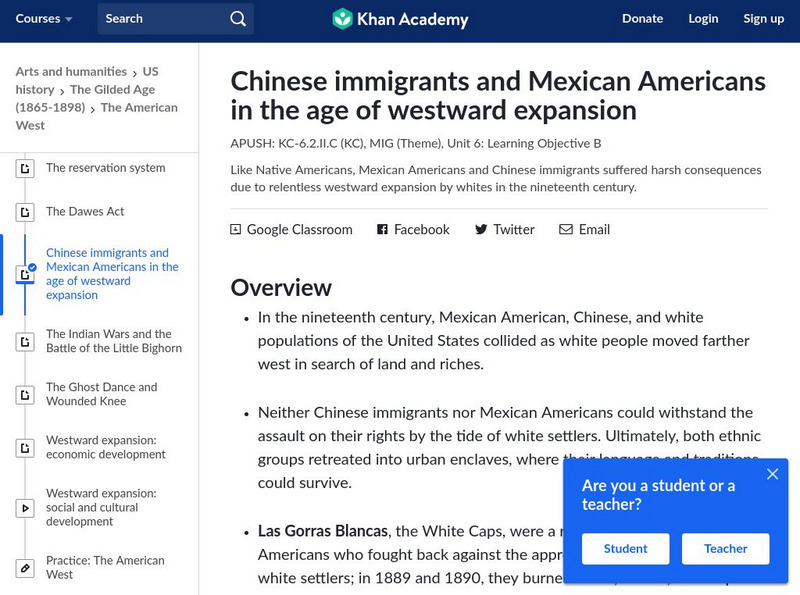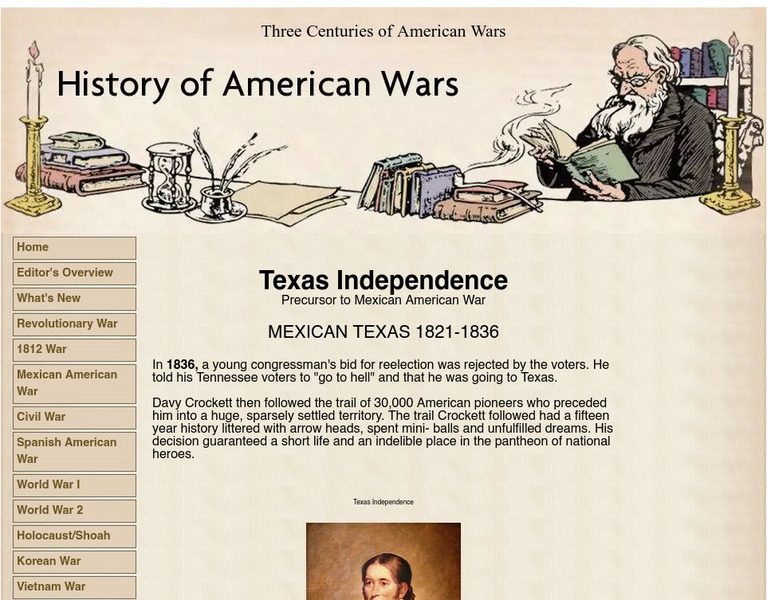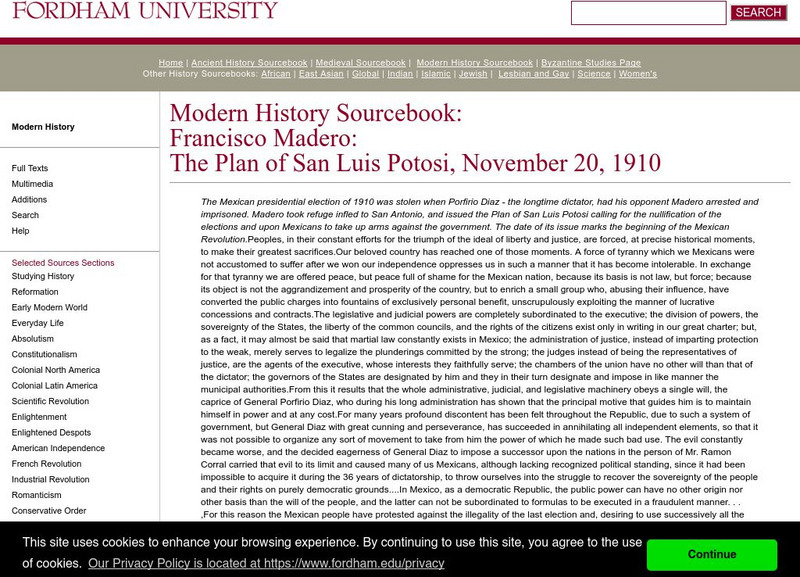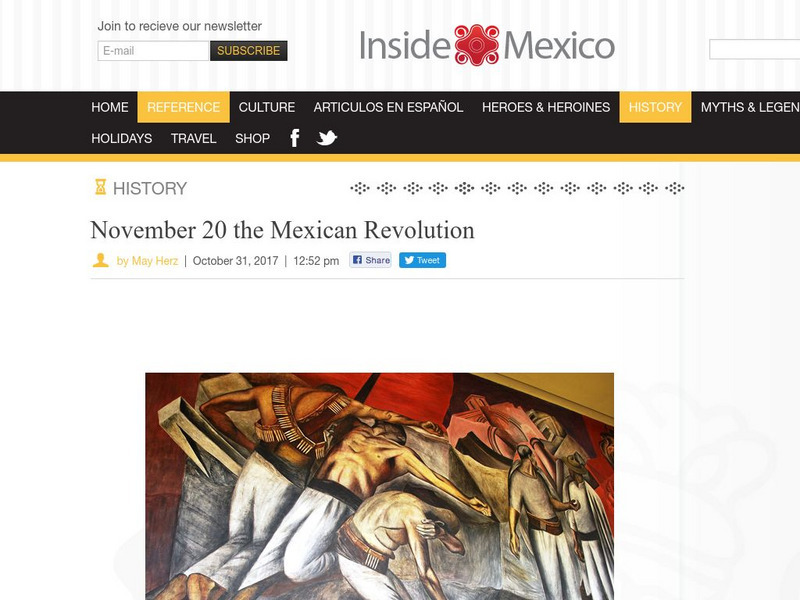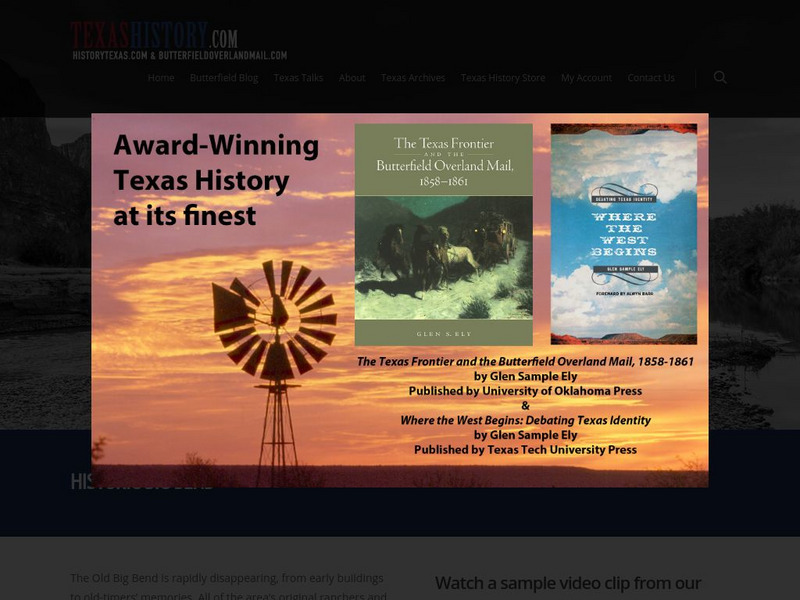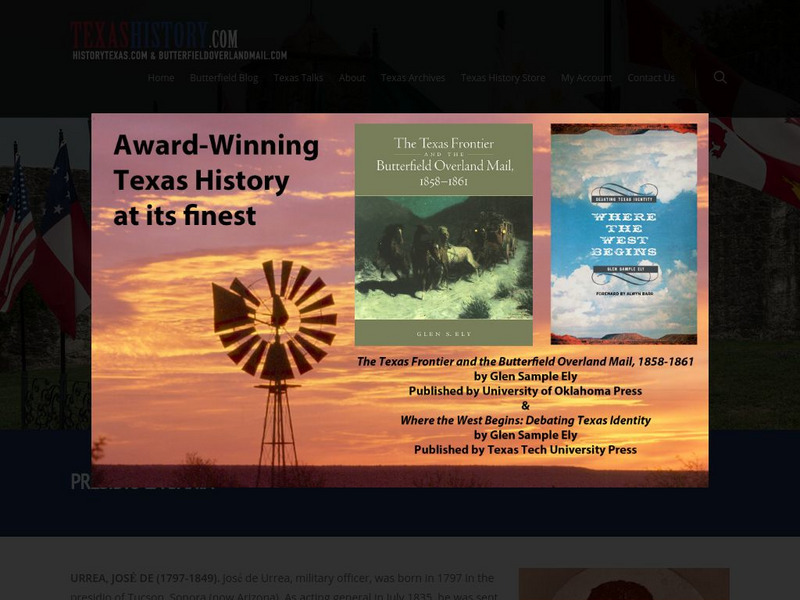The Alamo
A Teacher’s Guide to Antonio LóPez De Santa Anna
Who was Antonio Lopez de Santa Anna, and how did he relate to the Texas Revolution? Use an informative resource to find out! By reading primary sources, viewing maps and graphs, and answering short-answer written prompts in handouts,...
Country Studies US
Country Studies: Mexico
Outstanding outline from the Library of Congress covering important aspects of Mexican history, geography, society, economy, government, and national security.
US Army Center
U.s. Army Center of Military History: The Mexican War and After
This site from the U.S. Army's Center of Military History offers a detailed account of the Mexican War and its important battles as well as a description of what occurred after the war.
History of American Wars
History of American Wars: Mexican American Culture Differences
Describes the structure of Mexican society in the 19th century and the cultural clashes that resulted in their dealings with Americans in Texas.
History of American Wars
History of American Wars: Mexican American History: Mexican American War
Discusses the events of the Mexican-American War from 1846-1848.
Countries and Their Cultures
Countries and Their Cultures: Multicultural America: Mexican Americans
Provides an overview of the traditional culture and lifestyle of Mexican Americans. (Note: Content is not the most current.)
Khan Academy
Khan Academy: Ap Us History: 1865 1898: Chinese Immigrants and Mexican Americans
Discusses the conflict with Mexican American and Chinese groups as white settlers pushed westward in the nineteenth century. Explains what brought so many Chinese immigrants to America and the roadblocks and discrimination that they had...
History of American Wars
History of American Wars: Texas Independence: Mexican Texas 1821 1836
Discusses the sequence of events in Texas from 1821 to 1836 that led up to the Mexican-American War.
Library of Congress
Loc: Country Study: Mexico
Mexican History from Ancient Mexico until the presidency of Carlos Salinas. Also includes extensive information about Mexican society, the economy, government and politics, and national security.
Digital History
Digital History: Viva La Raza!
This Digital History site provides an informative overview of the Mexican American civil rights movement in America.
Internet History Sourcebooks Project
Fordham University: Modern History Sourcebook: Madero's 1910 Address to the Mexican People
Text of Francisco Madero's call to Mexicans to take up arms against the government, which marks the beginning of the Mexican Revolution.
Other
November 20 Commemoration of the Mexican Revolution
A short account of the Mexican Revolution (1910-1920).
Son of the South
Son of the South: The History of Texas: Battle of Medina
Written in the style of a narrative of events, read the stories surrounding the Battle of Medina in the Mexican War for Independence from Spain.
National Women’s History Museum
National Women's History Museum: Jovita Idar
Read about the life and times of Mexican-American journalist, activist, and suffragist, Jovita Idar.
History of American Wars
History of American Wars: Mexican American War Timeline 1846 1848
A timeline showing the events between 1821 and 1845 that led up to the Mexican-American War, followed by one with the major events of the war from 1846 to 1848.
Smithsonian Institution
National Museum of Natural History: American Mammals: Mexican Long Nosed Bat
The Mexican long-nosed bat feeds mainly on the nectar and pollen of agaves, and is found in Texas in June and July when the plants are in bloom there. Then it migrates southward into Mexico, where it lives in pine-oak forests and...
Smithsonian Institution
National Museum of Natural History: American Mammals: Mexican Woodrat
Mexican Woodrats inhabits rocky outcrops, cliffs, and slopes, primarily in montane regions from northern Colorado to Honduras. They eat a wide variety of leaves, seeds, and berries, and sometimes store large amounts of food. Learn more...
Smithsonian Institution
National Museum of Natural History: American Mammals: Mexican Fox Squirrel
Mexican Fox Squirrels are large but secretive, and though they spend much of their time on the ground, can be difficult to find at any season. They do not store food or bury nuts. Learn more about the Sciurus nayaritensis, more commonly...
Smithsonian Institution
National Museum of Natural History: American Mammals: Mexican Long Tongued Bat
Mexican long-tongued bats feed on fruits, pollen, nectar, and probably insects. The populations that summer in the United States migrate to Mexico and northern Central America in winter, following the blooming cycle of plants such as...
Smithsonian Institution
National Museum of Natural History: American Mammals: Mexican Ground Squirrel
Mexican Ground Squirrels have adapted well to human activity and are common inhabitants of roadsides, cemeteries, and golf courses. They are omnivores, feeding on the seeds of a variety of grasses and forbs, green plant material, and...
TexasHistory.com
Texas history.com: Big Bend Spotlight
The Big Bend, now a national park in Texas, was once home to a unique way of life, described briefly here. Before the telephone, there was no way for residents to communicate, except through the Mexican Grapevine using mirrors to flash...
TexasHistory.com
Texas history.com: Presidio La Bahia
Presidio La Bahia is a restored Spanish fort in Goliad, Texas, and an important site in the Texas Revolution. This is where a mass execution took place in 1836 under the command of the Mexican General Jose Urrea.
PBS
The Border: 1821 Mexican Independence From Spain
A brief recounting of the way Mexico was able to gain its independence from Spain. From PBS.
PBS
Pbs: Mariano Guadalupe Vallejo
This PBS site offers the biography of Vallejo, a California Mexican who placed his faith in the United States government, only to lose most of his land and political power.
Other popular searches
- Mexican History Mexico
- New Mexican History
- Timeline of Mexican History
- Mexican History Art
- Mexican History Lesson
- Mexican History Education
- Mexican History Lesson Plans
- Mexican History Day
- Mexican History Revolution
- Mexican History Zorro
- Mexican History Worksheet
- Time Line of Mexican History




